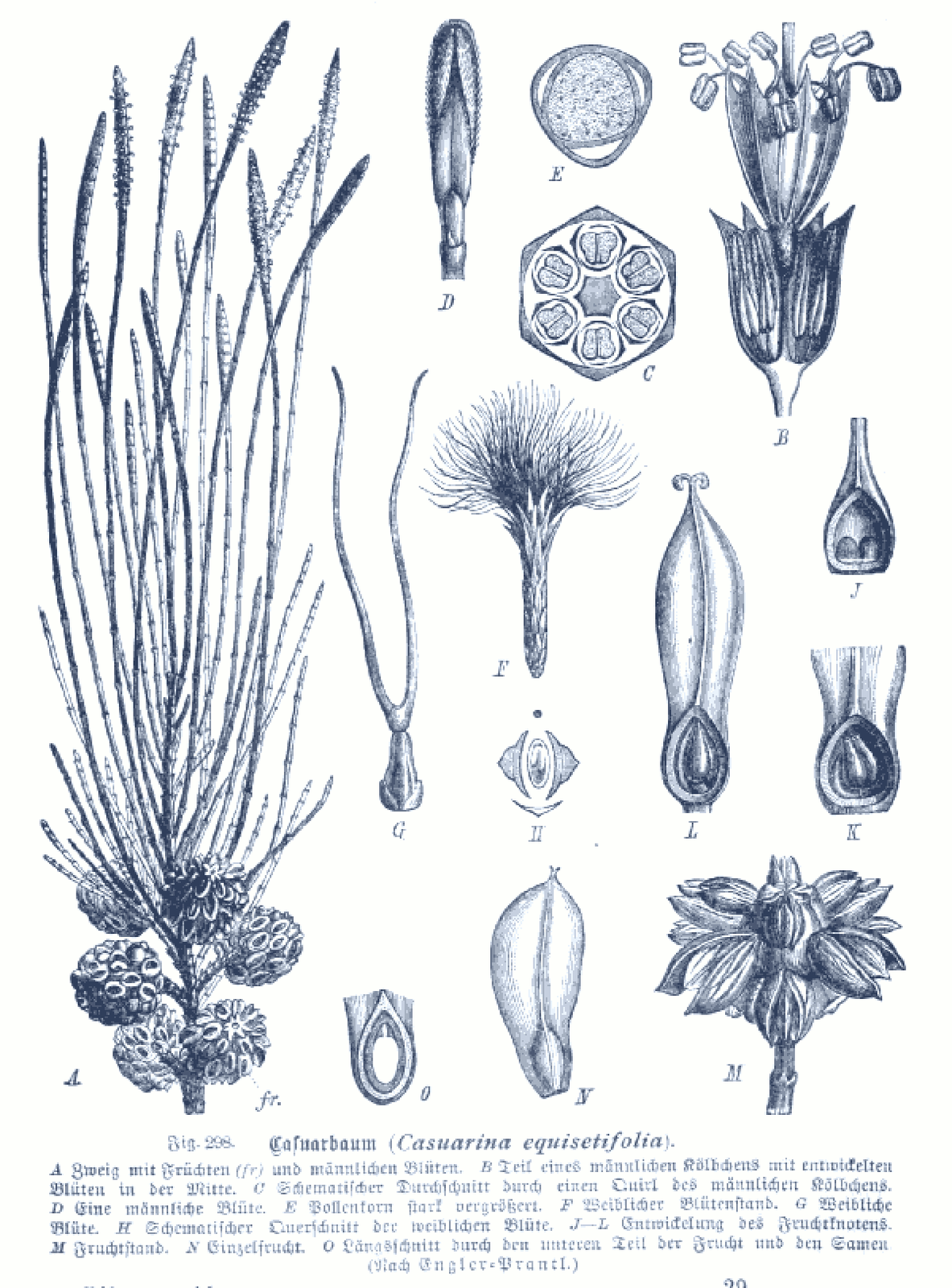Casuarina equisetifolia L.
CasuarinaceaeEl nombre del género hace mención a un ave, el casuario, que vive en su misma zona de origen, Nueva Gales del Sur y Queensland en Australia. El plumaje lacio de esta ave parecida al avestruz es muy similar a las ramas jóvenes de este árbol, de ahí su nombre popular. El nombre específico equisetifolia es por la semejanza de dichas ramillas con el equisetum o cola de caballo, un helecho muy frecuente en los campos españoles. Este árbol cuenta con una singular característica: sus raíces están asociadas con bacterias fijadoras de nitrógeno, por lo que no necesita abono de este elemento. Se convierte así en un árbol muy apropiado para la fijación de terrenos, ideal para programas de reforestación. También se usa en algunos lugares, USA y Canarias, como protección de cultivos frente al viento. Pero en el Alcázar de Sevilla sobresalen, sobre todo, porque en el año 2001, expertos del CISC de la Estación Biológica de Doñana localizaron en una de las casuarinas del Jardín Inglés del Alcázar una colonia de Nyctalus lasiopterus, el único murciélago carnívoro europeo que se alimenta de pequeñas aves además de insectos. Las colonias estaban en una de las casuarinas del Jardín Inglés y en la Carya que entonces existía entre el cenador de Carlos V y la galería del grutesco. El nóctulo abandona los refugios al anochecer y vuela fuera del Alcázar para cazar, por lo que esta especie utiliza el recinto de los jardines para ubicar sus refugios pero no para buscar alimento.
Procedencia
OceaníaCalendario
Hábitat
Morfología
 Árbol
Árbol
 Cilindrocónica
Cilindrocónica
 Septos
Septos
 Acicular
Acicular
 Otras disposiciones
Otras disposiciones
 Agudo
Agudo
 Perenne
Perenne
